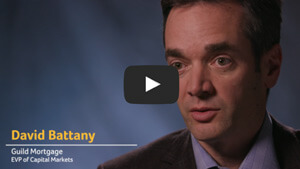An Eventful Week
Imagine being on vacation the past week or so, completely unplugging, and then coming back to work to find… multiple bank failures? DTI LLPA delays from FHFA? Nobody knowing whether the Fed will stand pat or deem stubbornly high inflation worthy of a hike to the Fed funds rate of 50 basis points next week? Sheesh. Let’s take a quick look at each of these topics.
If you haven’t already, we recommend reading our latest blog, March Housing Market Update: After Silicon Valley Bank Collapse, which details recent changes to the composition of bank portfolios and how we got to this point. Silicon Valley Bank’s cardinal sin was to buy Treasuries and MBS without hedging the interest rate risk. When the bank was met with a deluge of withdrawal requests, it sold its available-for-sale securities at a loss in the hope it would cover withdrawals.
Bank Consortium to the Rescue
The banking space concocted a quasi-rescue deal in just a matter of days, with the nation’s biggest banks – JPMorgan, Bank of America, Citi, and Wells Fargo ($5 billion each) – agreeing to deposit around $30 billion with troubled First Republic Bank. The full consortium of 11 banks, which also includes Goldman Sachs, Morgan Stanley ($2.5 billion each), PNC Financial, BNY Mellon, Truist, U.S. Bancorp, and State Street ($1 billion each), coming to First Republic’s aid, represents a vote of confidence for First Republic and the entire U.S. banking system. This is obviously a developing story.
Mortgage rates have fallen substantially in recent days.
DTI LLPA Delay
Shifting gears, the Federal Housing Finance Agency (FHFA), after updating Fannie Mae and Freddie Mac’s (the Enterprises) single-family guarantee fee pricing framework with a special focus on upfront fees in January 2023, decided to delay the effective date of the DTI ratio-based fee by three months to August 1, 2023, to ensure a “level playing field” for all lenders to have sufficient time to deploy the fee.
In addition, lenders will not be subject to post-purchase price adjustments related to this DTI ratio-based fee for loans acquired by the Enterprises between August 1, 2023, and December 31, 2023. Beyond impacting the new upfront fee for certain borrowers with a debt-to-income (DTI) ratio above 40 percent, the updated pricing grids also include the upfront fee eliminations announced in October 2022 to increase pricing support for purchase borrowers limited by income or by wealth. My question for capital markets heads is this: are you going to credit back the DTI LLPA or not?
Looking to the Federal Reserve
Finally, let’s get to the Fed. Bank failures have made the Federal Reserve’s decision at its meeting next week significantly more complicated. Until now, the economy (aside from the mortgage and residential real estate markets) has weathered the Federal Reserve’s rapid interest rate increases remarkably well. However, these bank failures have made clear that the Federal Reserve’s rapid increase in rates has created real and lasting consequences to the banking sector and the overall economy. The stress in the banking system will restrict credit and that will have a tightening effect on its own.
This makes it all but certain that the Federal Reserve will raise rates by a maximum of 25 basis points at its meeting next week, with a real possibility that the Fed pauses rate increases to better assess the impact of their policy decisions to date. Next week will reveal the Fed’s resolve on continuing to beat the drum in their aggressive inflation fight. The word until now has been that the central bank will keep hiking interest rates until inflation is under control. But sadly, we haven’t been on vacation for the last week, so we aren’t as sure about that as we once were.



